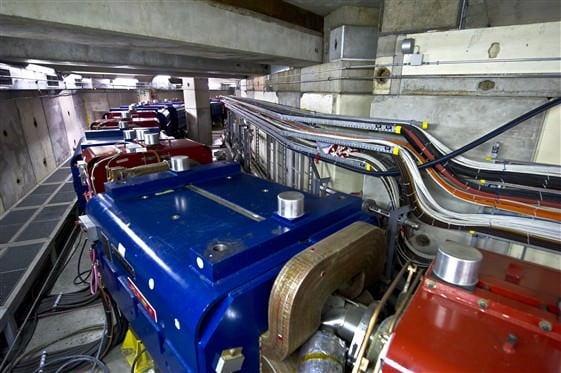The Large Hadron Collider (LHC) could be re-started on this Saturday morning CERN officials said. Engineers are preparing to send a beam of sub-atomic particles around the 27km-long circular tunnel, which has been shut down since an accident in September 2008. Scientists hope to create conditions similar to those present moments after the Big Bang in search of the elusive Higgs particle to shed light on fundamental questions about the universe.
The massive "Big Bang Machine" as it's been called is located on the French-Swiss border and is operated by the European Organization for Nuclear Research (CERN)
Watch an animated movie from CERN that explains how the LHC works.
1,200 superconducting magnets arranged end-to-end in the underground tunnel bend proton beams in opposite directions around the main "ring" at close to the speed of light.
At allotted points around the tunnel, the proton beams cross paths, smashing into one another. Physicists hope to see new sub-atomic particles in the debris of these collisions.
The LHC had only recently been turned when on Sept. 19, 2008 a magnet problem called a "quench" caused a ton of liquid helium to leak into the tunnel.
Liquid helium is used to cool the LHC to an operating temperature of 1.9 kelvin (-271C; -456F).
Low-energy collisions are expected a week or two after full beam. High energy collisions will take place starting in early 2010.
Source:
BBC
 Universe Today
Universe Today
